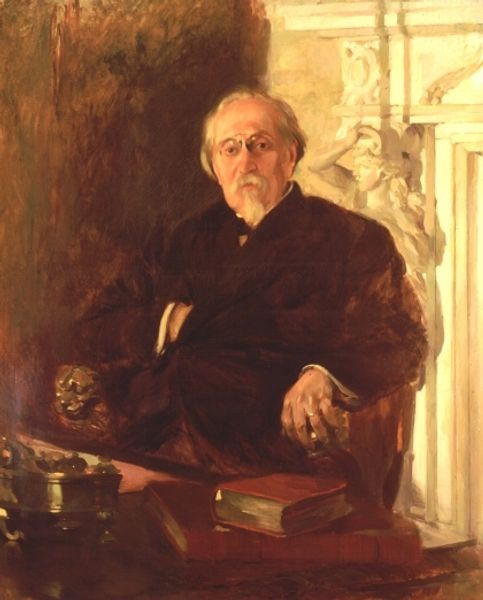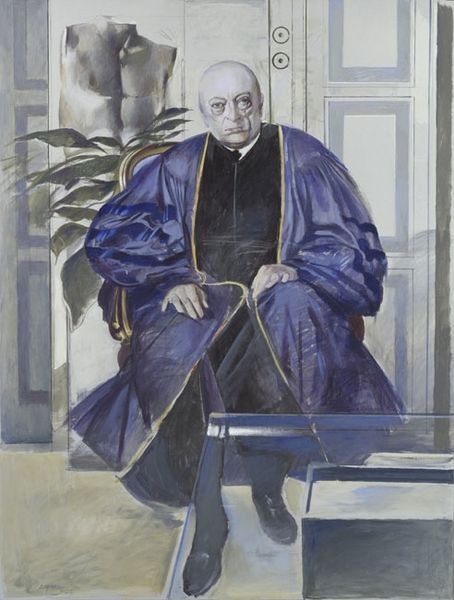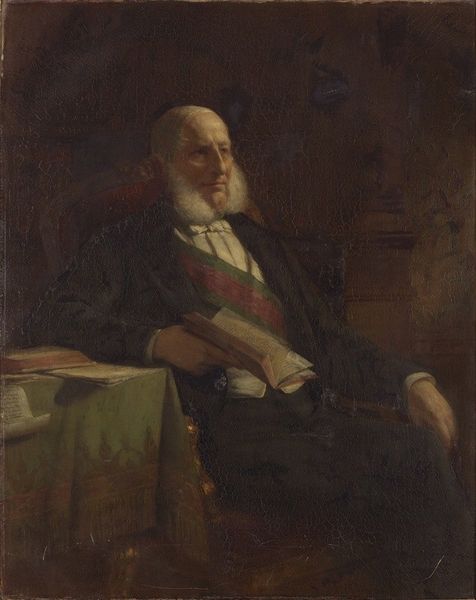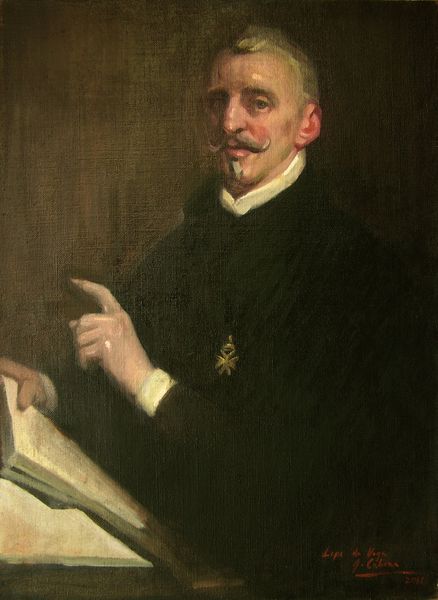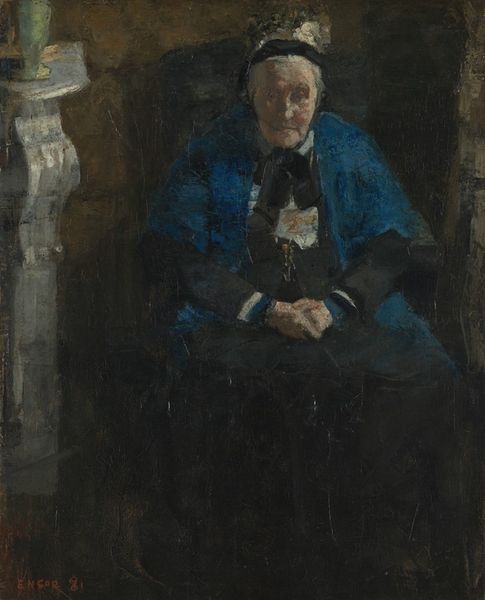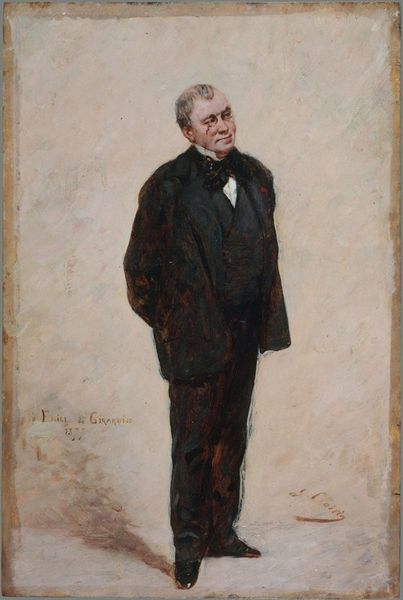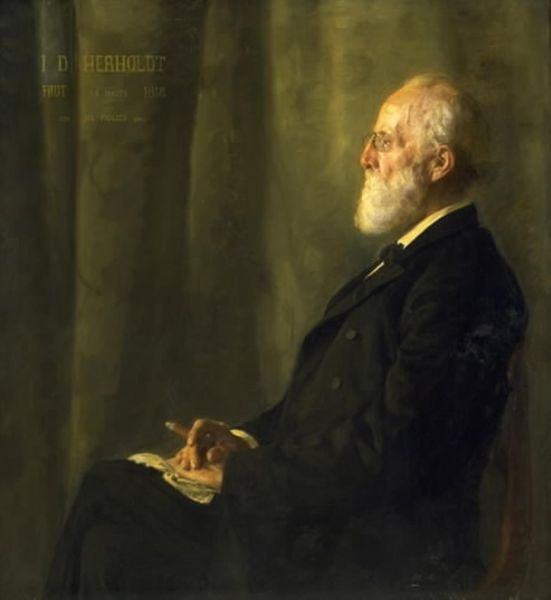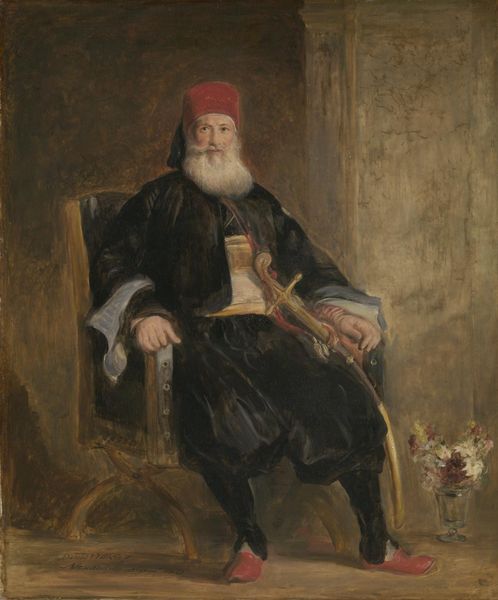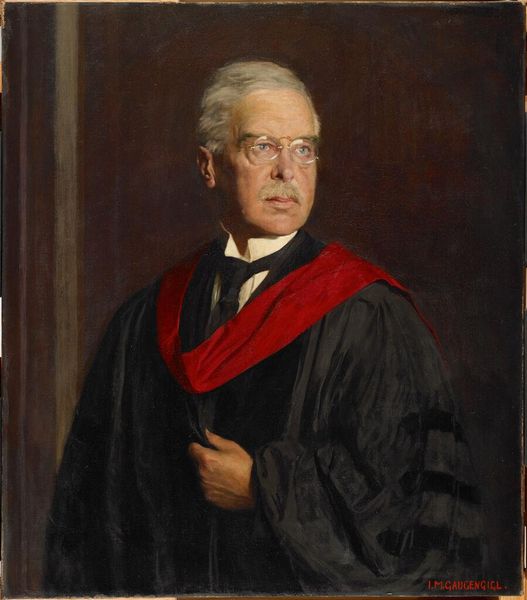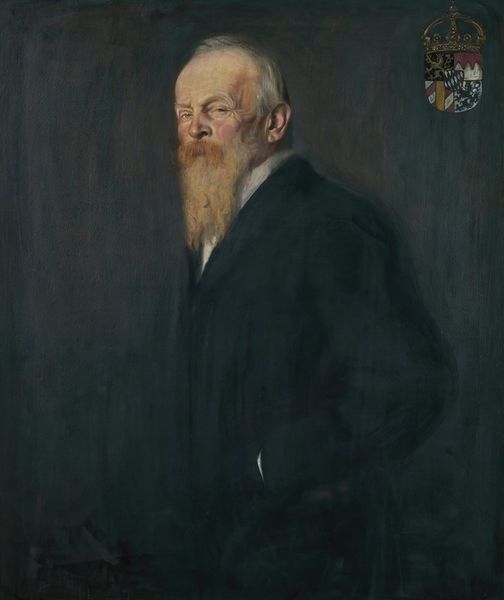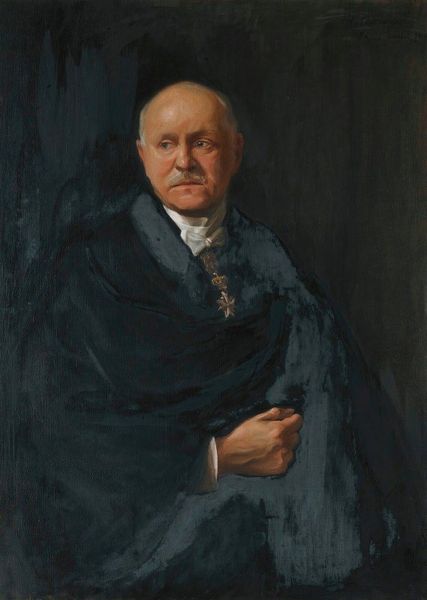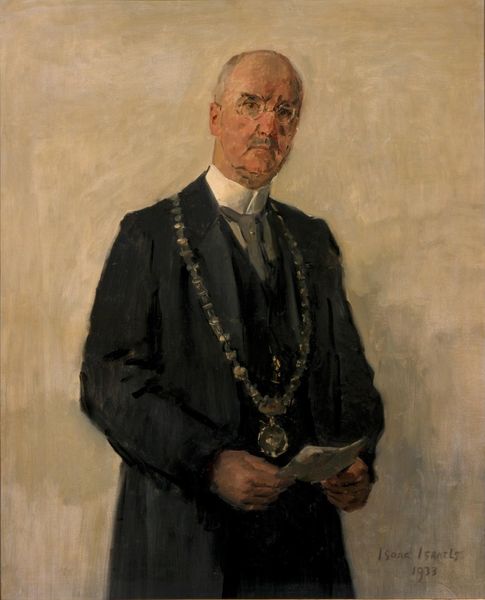
Dimensions: 78.5 x 60.5 cm
Copyright: Public domain
Editor: This is "The Pastor," painted in 1879 by Ferdinand Hodler. It's an oil painting, quite striking in its realism. What grabs me is how…unidealized it feels. He looks worn, almost burdened. What do you see in this piece? Curator: Beyond the surface portrayal, I see a commentary on the changing role of the church in late 19th-century Europe. Hodler, situated in Switzerland, would have been acutely aware of the rise of secularism. Notice the muted colors, the somber atmosphere. Do you think that could reflect a society questioning established authority? Editor: That's a good point. It’s not the celebratory portrait one might expect. He's holding a book – presumably the Bible – but there's no sense of triumph, more of a quiet resignation. Curator: Precisely. And consider the political climate. 1879 was a time of intense social and political upheaval. The burgeoning socialist movements directly challenged traditional power structures, including the church. Is Hodler subtly suggesting that the pastor's influence is waning? His gaze directed away hints to a decline. Editor: So, you’re suggesting the painting functions almost as a social document, reflecting a broader cultural shift? Curator: Indeed. Hodler wasn't merely painting a portrait; he was capturing a moment in time, a questioning of established institutions, framed within the socio-political discourse of the era. Consider where this work might have been exhibited, what audiences would have understood by this seemingly simple image of a man of faith. Editor: I never thought about it that way. Seeing it as more than just a portrait, but as a piece of social commentary. It’s fascinating! Curator: And understanding the political forces at play gives it layers of meaning beyond its aesthetic appeal. Hopefully you take a new and meaningful understanding of history within the visual arts.
Comments
No comments
Be the first to comment and join the conversation on the ultimate creative platform.

